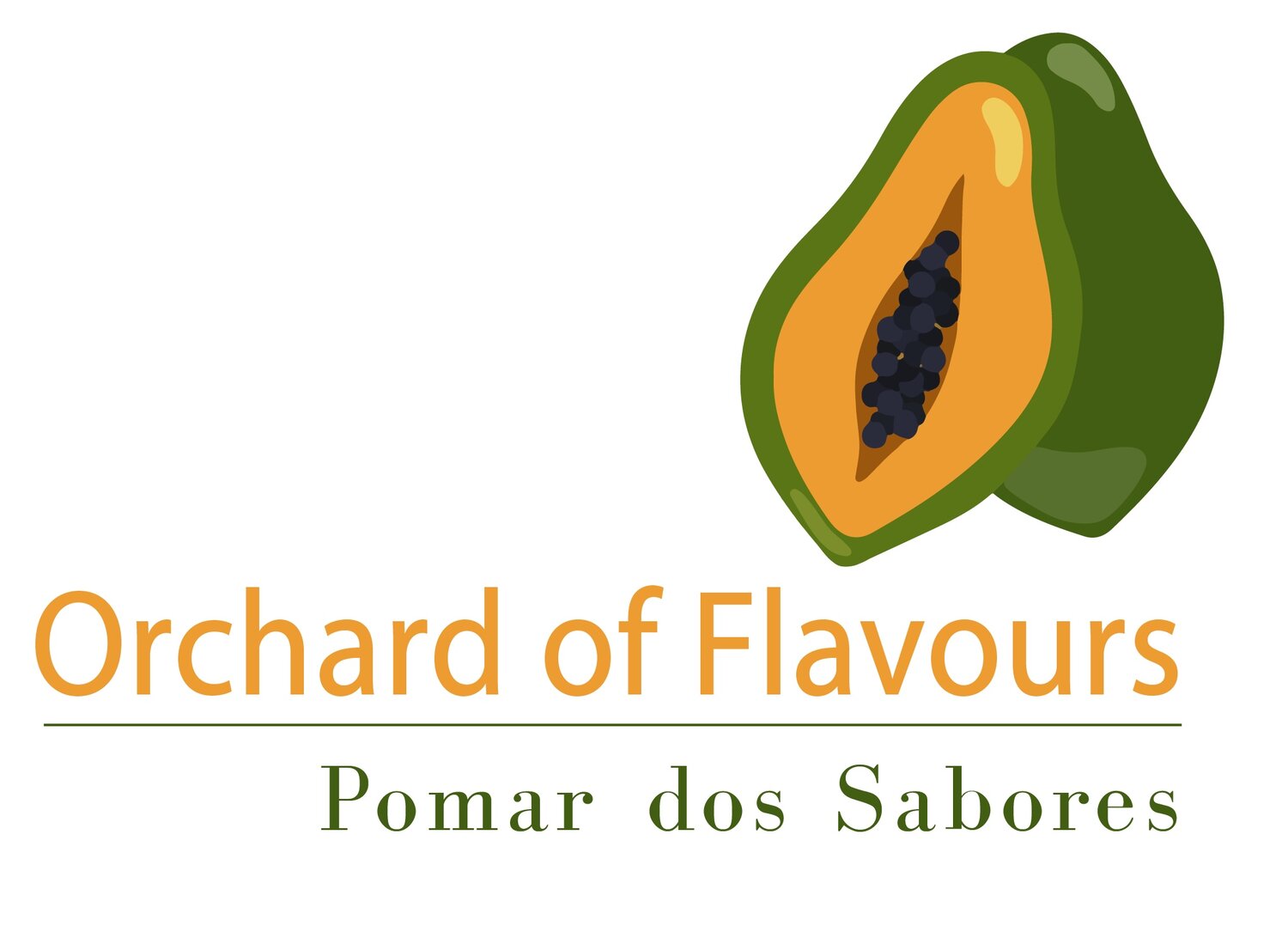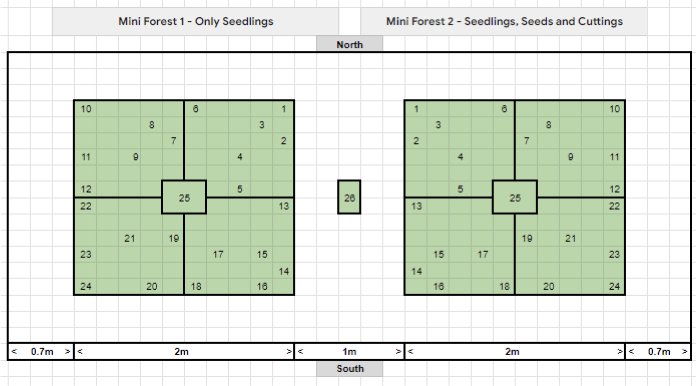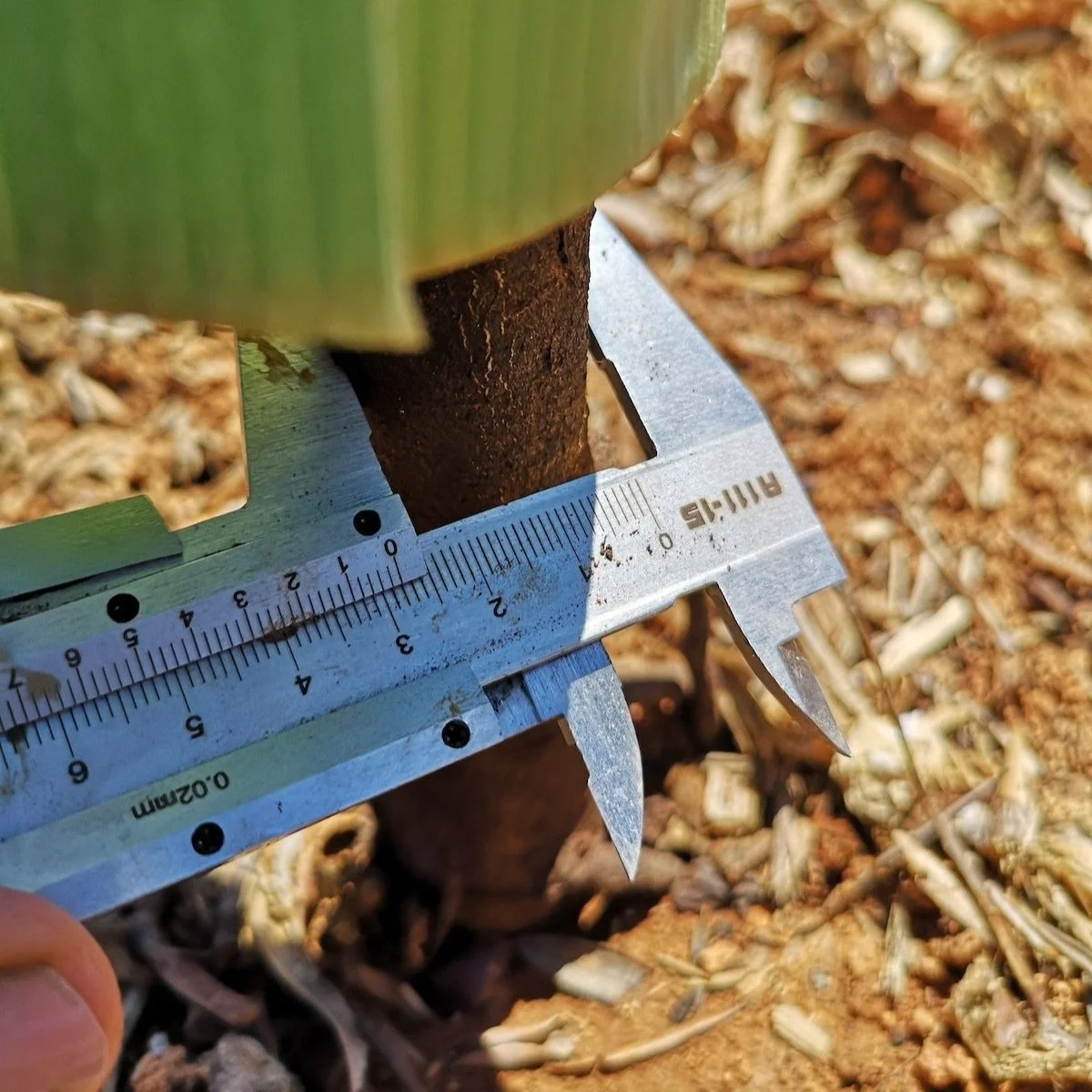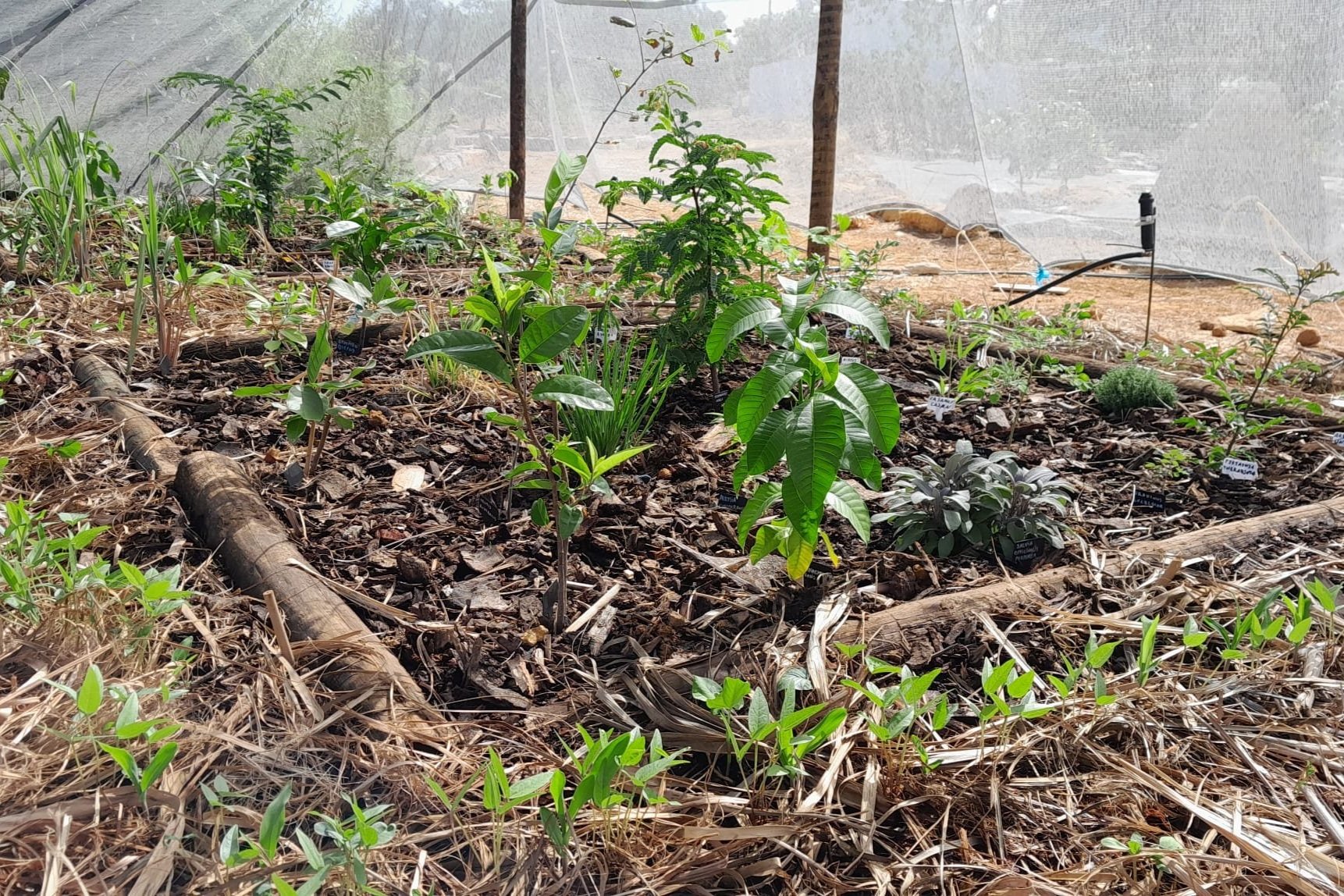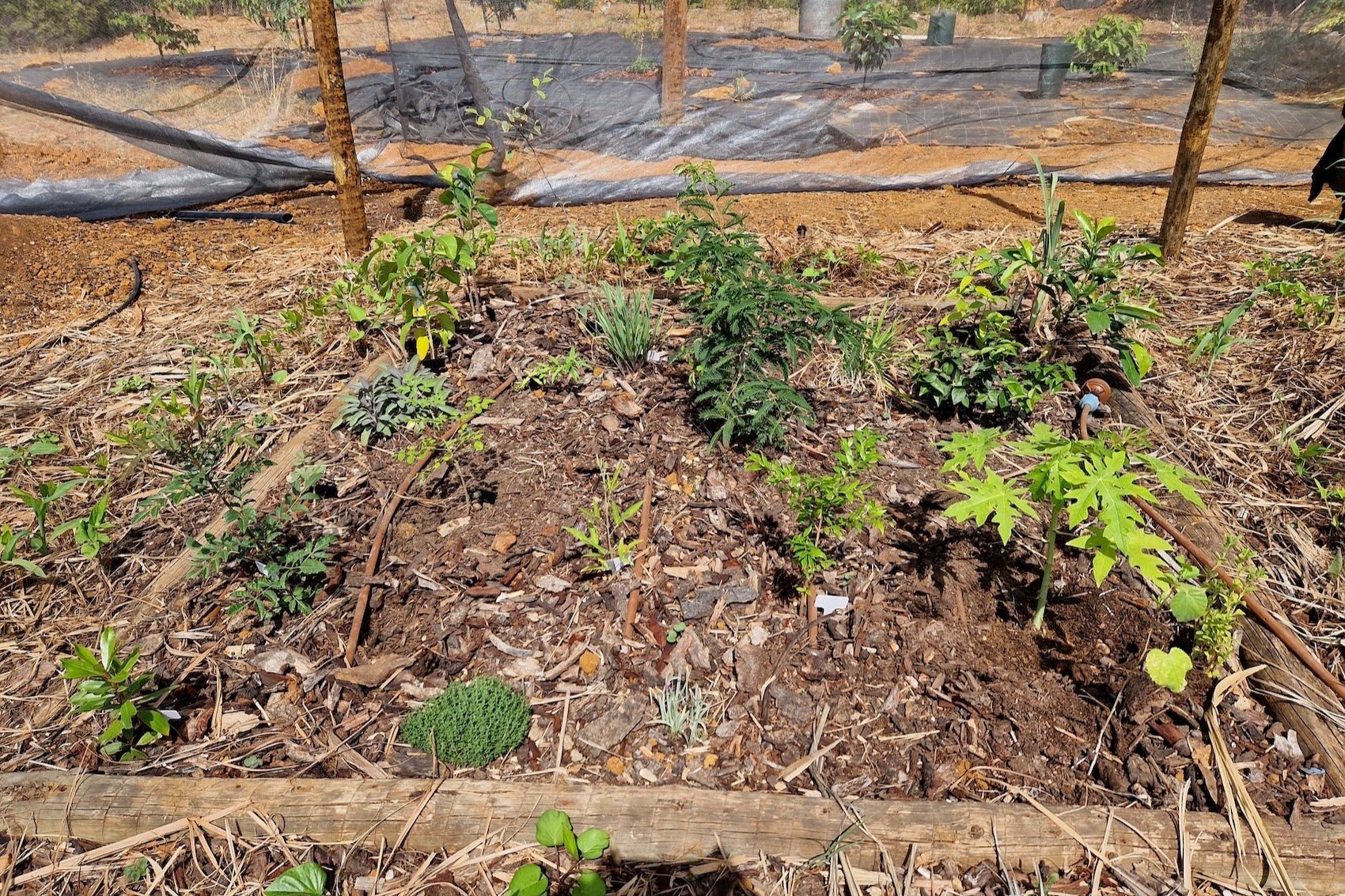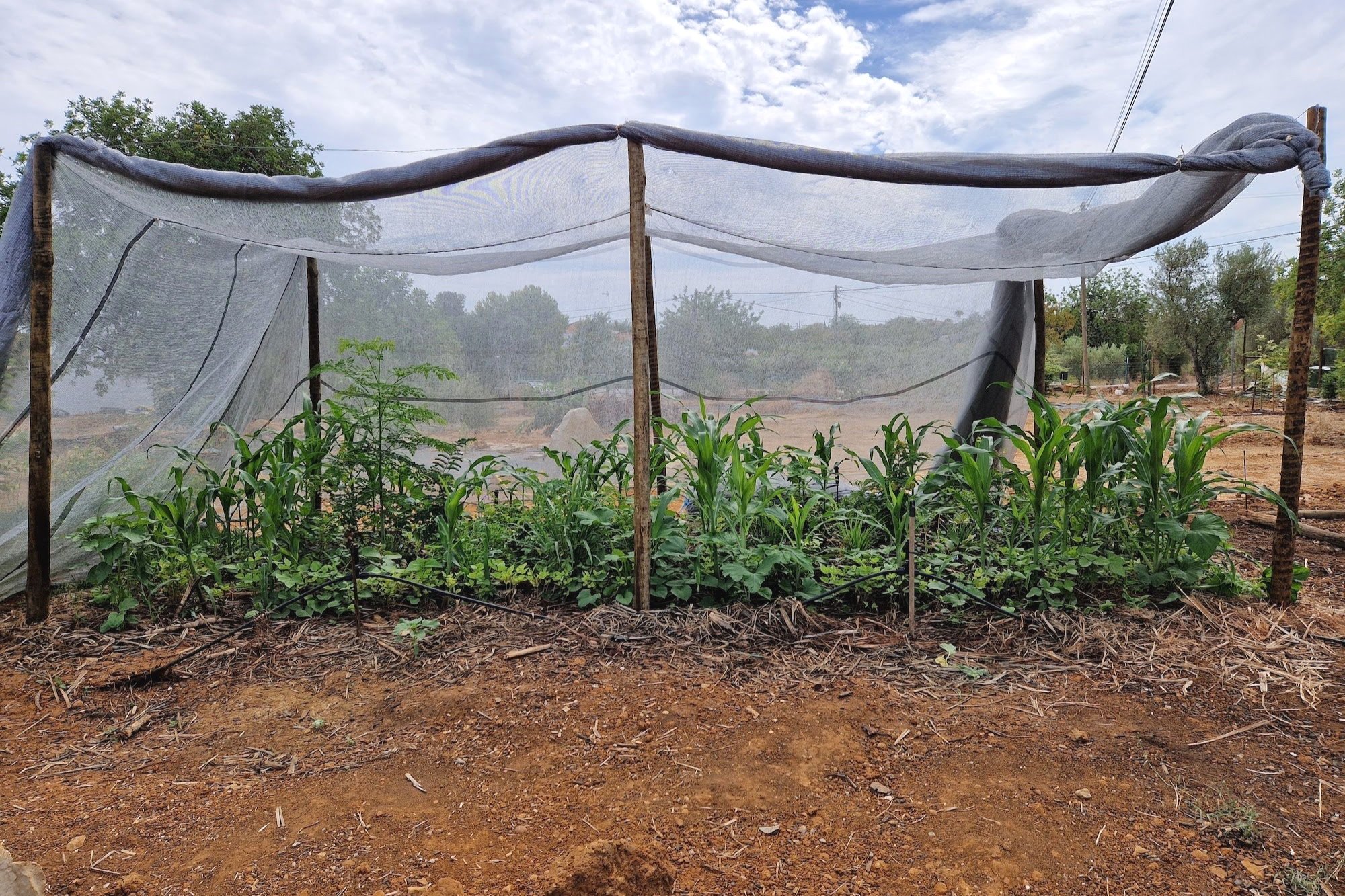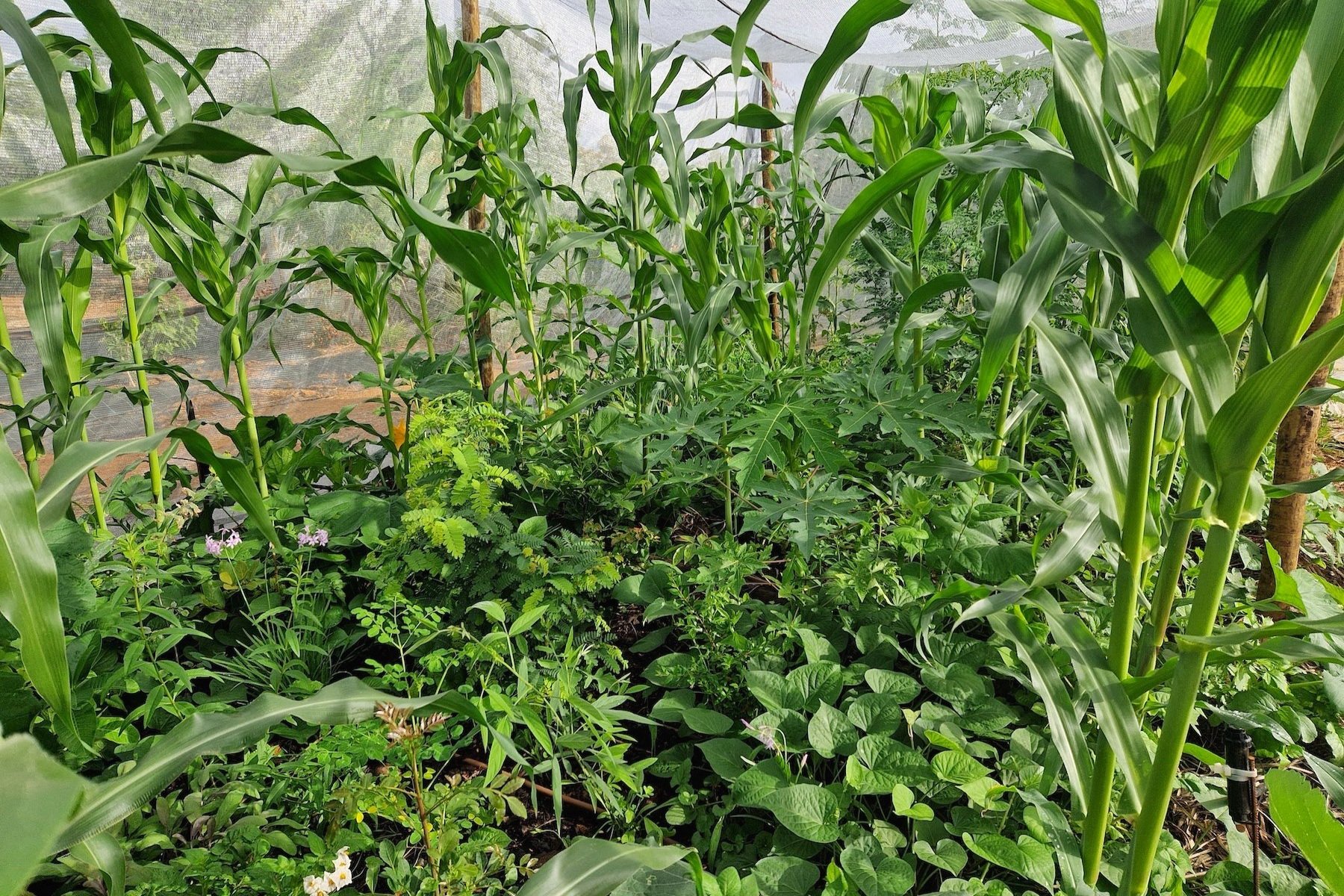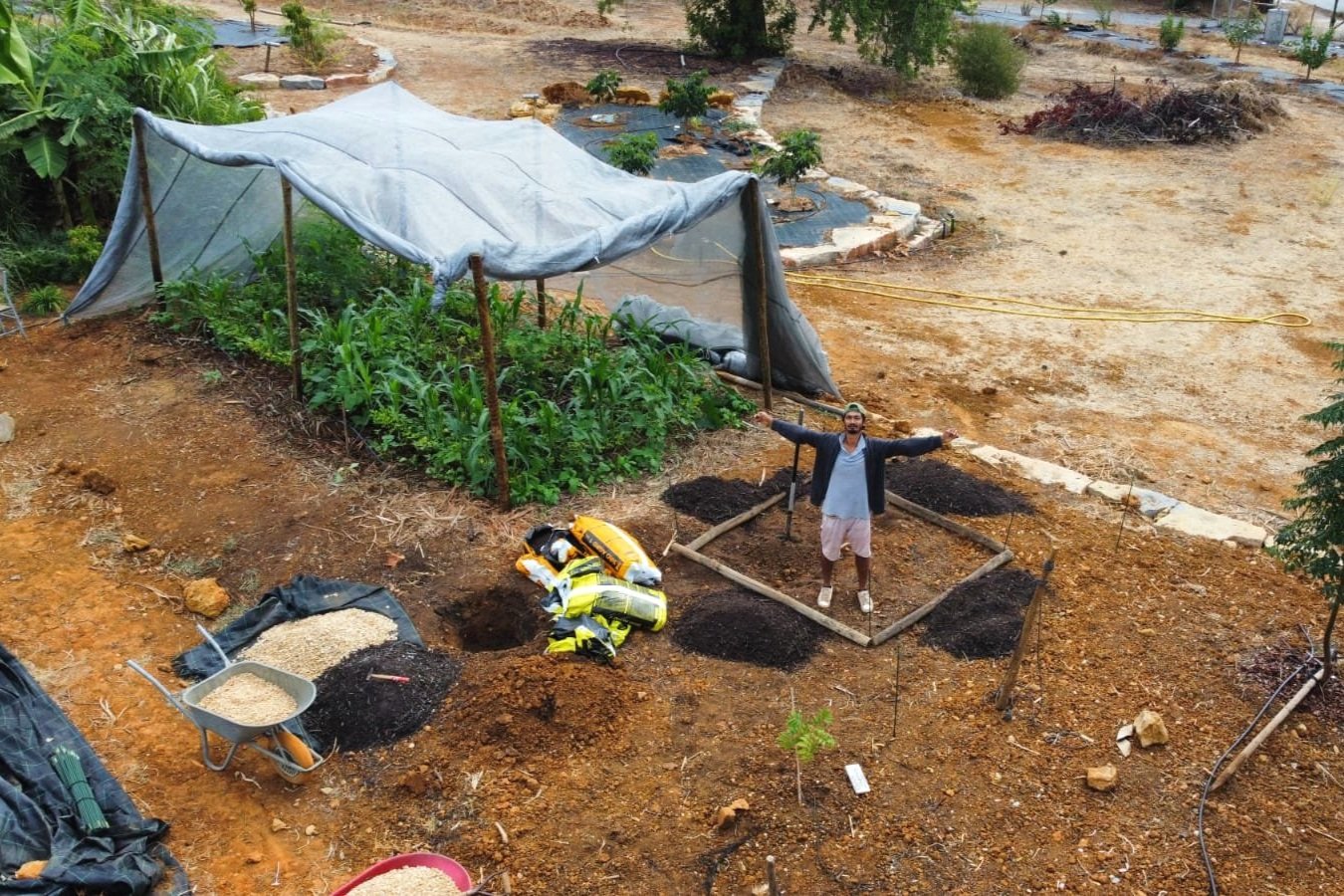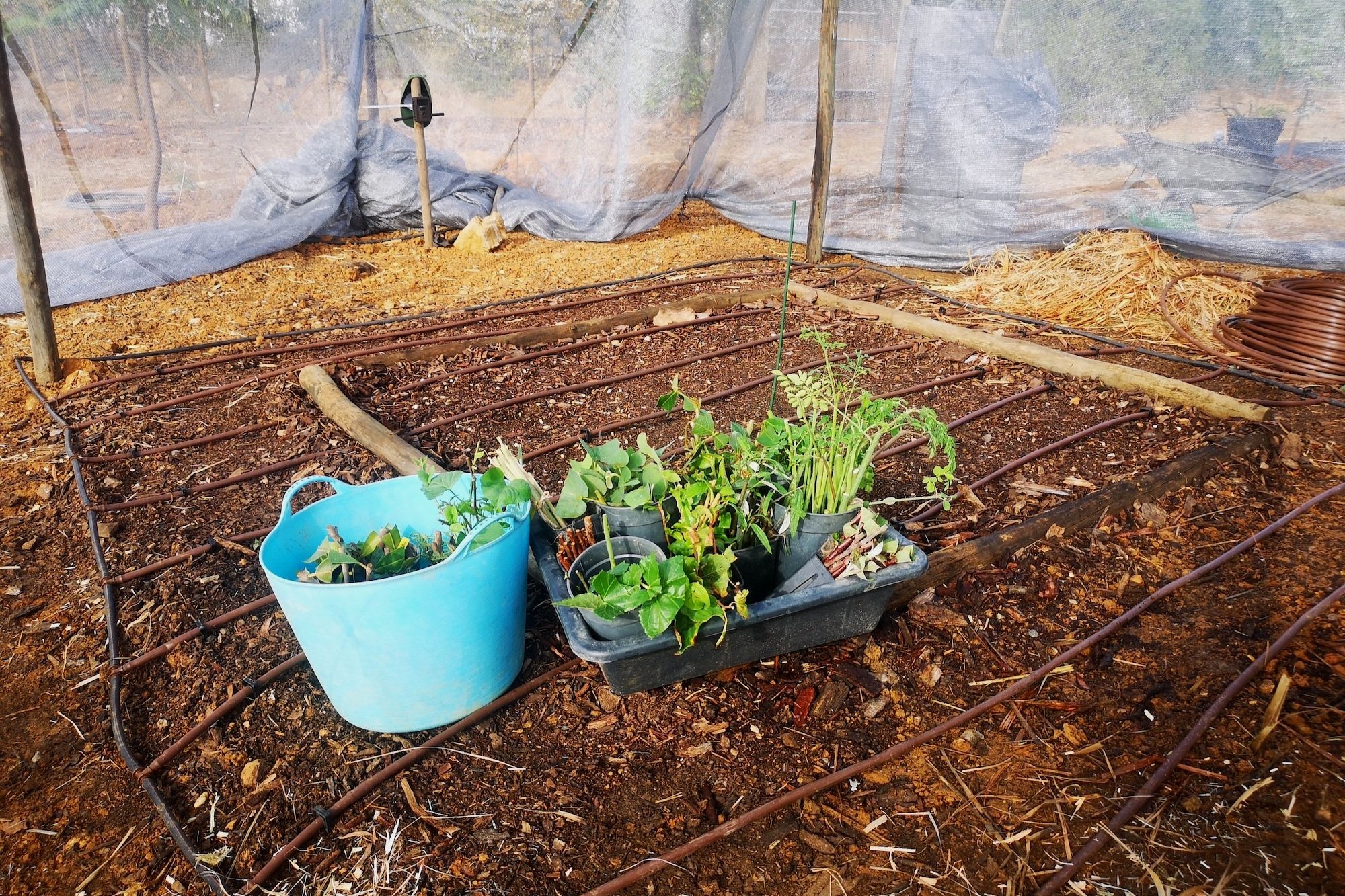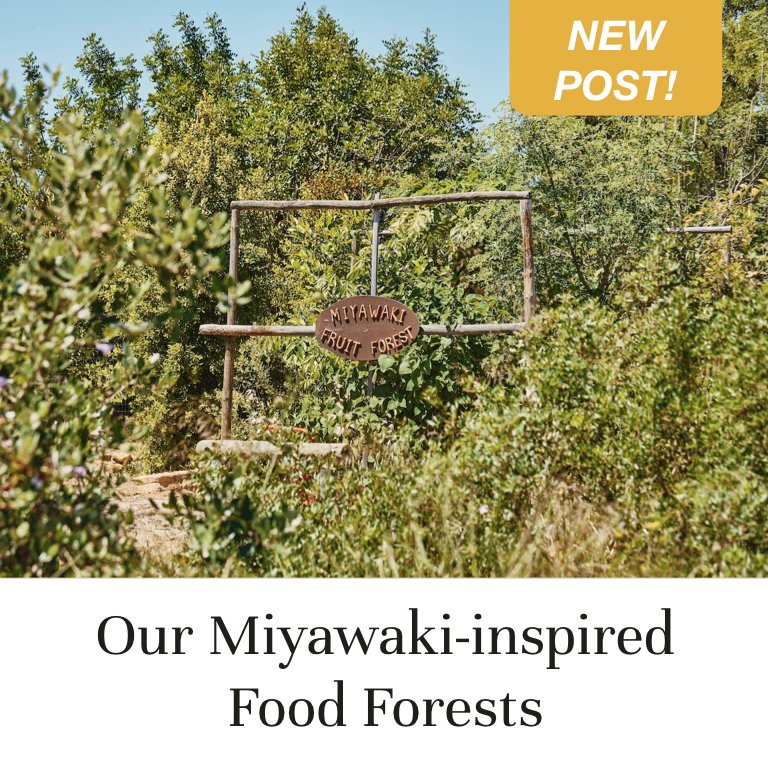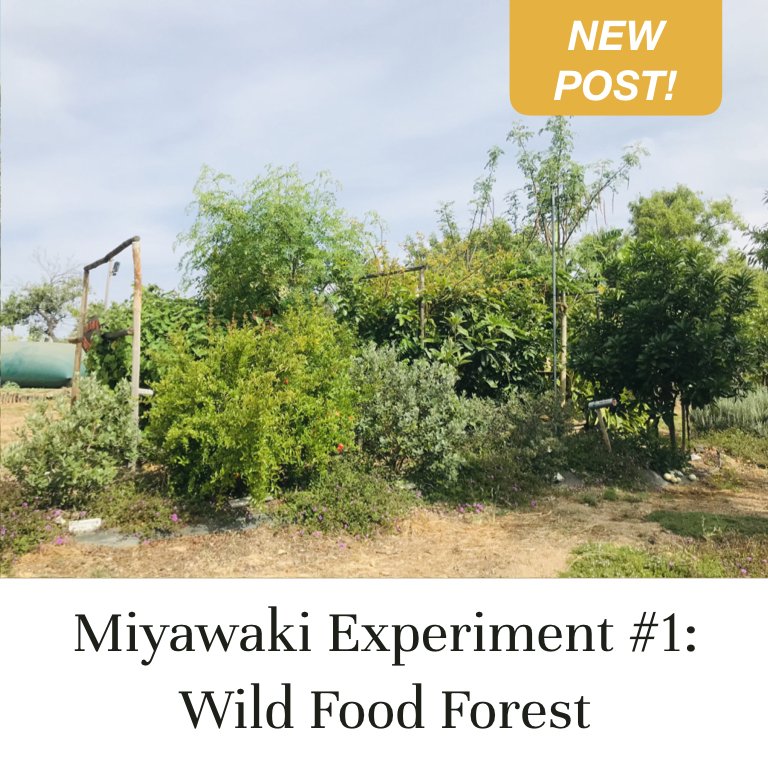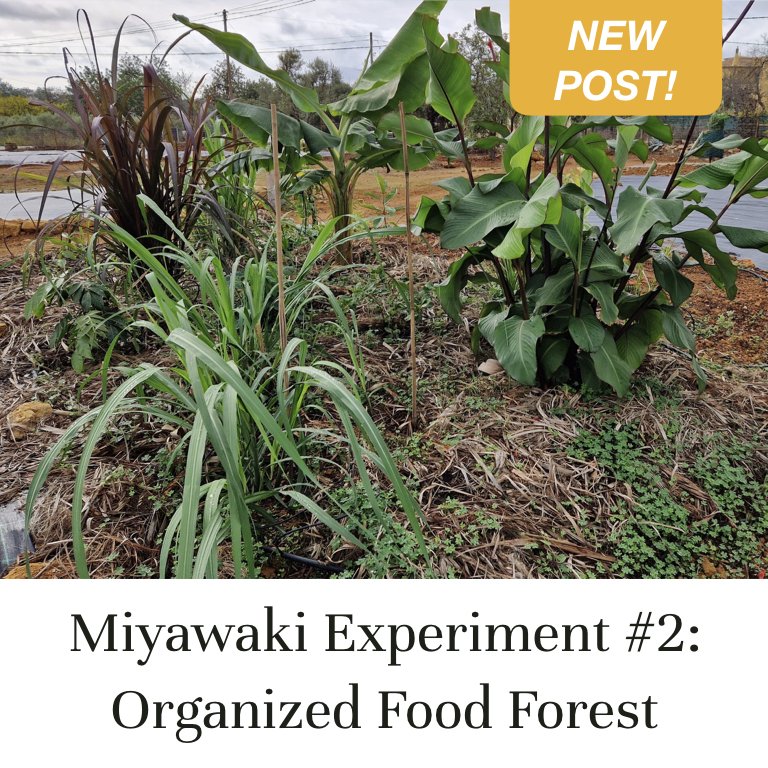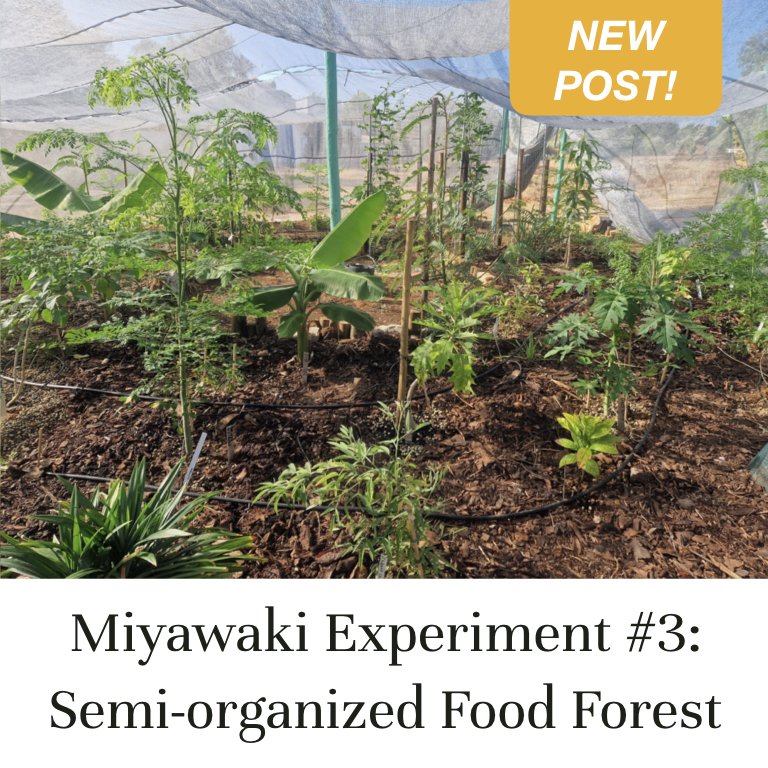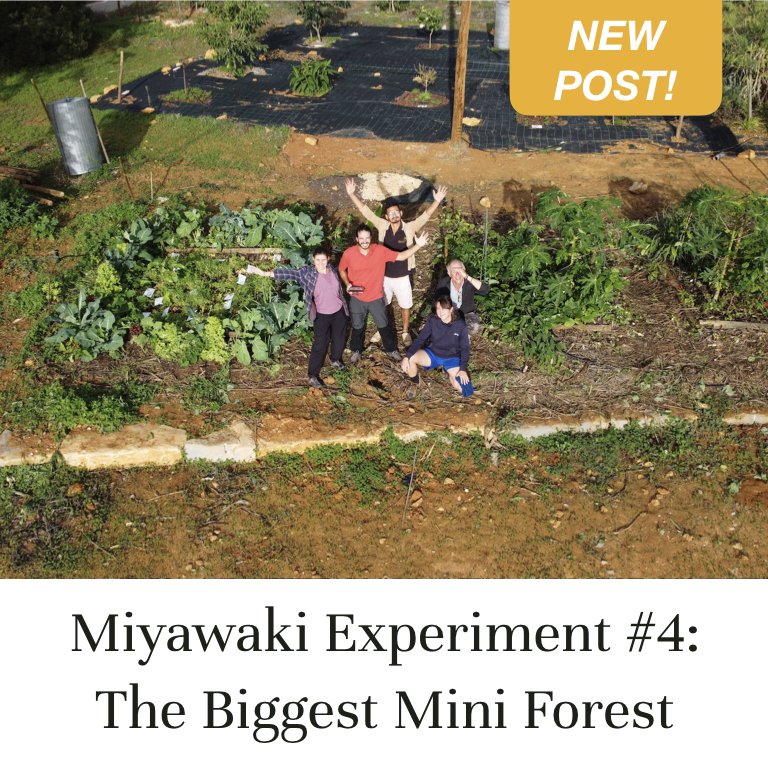Miyawaki Experiment #4 — The Biggest Mini Forest
In collaboration with the Biggest Mini Forest project — for which the Orchard of Flavours’ founder, Miguel COTTON, is an advisor —, we put together the smallest, most dense Food Forest experimental plots yet. The idea is to progressively add new 4m² squares, building on acquired learnings.
jump to —> Concept — Experiment #4 specifics — Experiment #4.1 specifics — Expected results — Data Monitored — Species List — Other Experiments
The benefits of a Food Forest
All our Miyawaki-inspired Food Forest experiments are focused on growing fruit trees and other edible plants, while strongly contributing to improve their surrounding environment.
They offer a number of advantages over traditional gardens, including high productivity, low maintenance, water conservation, soil erosion reduction, wildlife habitat provision and resilience against drought or powerful winds. In addition, Food Forests can be educational and aesthetically pleasing.
Putting the Miyawaki method to practice
We’re doing this by mimicking a natural forest environment:
Enriching the existing soil 🪱🍄
Designing a multi-layered forest 🌳🌿
Planting very densely and at the same time 🌱🌱🌱
Caring for and protecting all the baby trees 💧🪺
First square Mini Forest of Experiment #4, one month after planting
To find out more details about this way of creating dense, fast-growing forests, check out the main article. There, we also describe how we’re applying its principles across the different experiments at the Orchard of Flavours site!
Food Forest Experiment #4 - The Biggest Mini Forest (TBMF)
This Food Forest Experiment follows the exciting approach developed by the Biggest Mini Forest team, who implemented it together with us at the Orchard
The approach is a simplified design that allows people to implement their own Mini Food Forest with as few obstacles as possible, by keeping it small (or ‘Mini’) and using fewer resources than a bigger project would
Its tiny scale (4m² plots : 2m x 2m), not only brings down the maintenance needs, but also allows the growers to learn from their previous tries, applying the newly-gained knowledge and experience (as well as genetic material, like seeds) to new tiny expansion plots later on, slowly growing that Mini Forest into a Big Forest
This is why it’s called the ‘Biggest Mini Forest’ — it’s basically an “Expand-at-your-own-pace” system of planting a Food Forest! Their motto is Start Mini, Go Big — you can learn more on their website
We decided to make a two-square experiment first (Experiment #4) , and then one month later we expanded it with a third plot (Experiment #4.1 — more about that in a minute)
Diagram of the two 4m² Mini Forests of Experiment #4. The numbers in the diagram show the location of each perennial seedling planted, across 4 quadrants. Surrounding each square, we planted a 70cm-wide border of annual plants, which will provide protection to the Forests and extra food
Experiment #4 — The specifics:
Planting date: August 2023
Area: 4m² + 4m² (2 Mini Forests)
Number of species: 25 *
Total of plants: 25 (each Mini Forest)
Planting density (of perennials seedlings): ~6/m²
* —> in addition to the usual seedlings of perennial plants, this TBMF experiment also includes the following, in significant quantities:
perennials by seed and cuttings (9 and 6 additional plant species, respectively)
annuals by seed and cuttings (12 and 1 plant species, respectively)
Preparing the two 4m² plots for the Biggest Mini Food Forest, our Experiment #4. To the East (right), you can see the Mini Edible Jungle of our Miyawaki Experiment #2, the Organized Food Forest
Diagram showing TBMF’s standard 4m² Mini Forest design, including the distribution of the perennial species of different layers across the quadrants, as well as a 50cm-wide border of edible annual plants surrounding the Mini Forest (at the Orchard, we used 70cm-wide borders)
Experiment #4 consists of Mini Forest 1 and Mini Forest 2. In each of these — and according to the TBMF approach (see diagram) — we evenly distributed the seedlings of perennial species belonging to each forest layer, namely ‘canopy’, ‘understory’ and ‘shrub’, making sure each was equally represented in each quadrant. This will ensure a diversity of plant size in each corner of each Mini Forest
Surrounding each Mini Forest, we planted a 70-cm wide border with edible annual plants (13 species, using both seeds and cuttings). The idea is to take advantage of the fertility brought by the initial soil preparation and so, to harvest some early crops from the area, while also providing the Mini Forest seedlings with extra protection against wind and strong sunshine
Specifically on Mini Forest 2, we also added numerous cuttings and seeds belonging to quite a few (15) additional perennial species, as a cheap and fast way of increasing (even more!) the density and biodiversity
Diagram of Mini Forest 3, Experiment #4.1. The numbers in the diagram show the location of each clump of 3 to 4 cuttings or group of seeds of each species, across 4 quadrants. Surrounding this square, we planted a 70cm-wide border of annual plants, which will provide protection to the Forest and extra food
Experiment #4.1 — The specifics:
Planting date: September 2023
Area: 4m² (1 Mini Forest)
Number of species: 36
Total of plants: 3 to 4 cuttings per species; several seeds per species
Target plant density: 9/m² (depends on rooting and germination success rates)
This specific Mini Forest was created to test how we can create a Food Forest using just species propagated by seeds and cuttings. These were directly inserted in the plantation area, without prior development in pots or trays
The edible Mini Forest 1 — of Experiment #4 — just after planting. A total of 25 plants in 4m²
The dense plant life in Mini Forest 2, one month after planting
The expected results:
The fastest growth rate compared to other designs of Food Forest (due to higher density)
Fast growth and protective effect by annual plants in first 6 months
Early food production from annual plants
More biomass production, allowing more and earlier chop-and-drop
Faster nutrient cycling (helping faster growth)
Data monitored:
Plant height
Trunk diameter at 20% of the total height
Food production
Average water usage
Plant survival rate
Pests & diseases
Remember that you can find out more about the Biggest Mini Forest project by visiting their official website.
Measuring a tree trunk diameter at 20% height
Miguel COTTON and Luís AFONSO showing Mini Forests 1 and 2 during a group visit of the Orchard
Make sure to check our main article on Miyawaki-inspired Food Forests, where we explain the whole concept and how we’re putting it in action at the Orchard of Flavours site. Also, don’t forget to compare this Experiment #4 with all the others already growing:
Perennial species in these Mini Food Forests (1, 2 and 3)
Numbers on the list do not correspond to the diagrams shown earlier on the article
Aloysia citrodora — lemon beebrush
Annona montana — mountain soursop
Annona cherimola — cherimoya
Arbutus unedo — strawberry fruit tree
Bauhinia variegata — orchid tree
Cajanus cajan — pigeon pea
Carica papaya — papaya
Celtis australis — Mediterranean hackberry
Cinnamomum verum — true cinnamon tree
Cymbopogon citratus — lemongrass
Debregeasia edulis — yanagi ichigo
Diospyros digyna — black sapote
Eugenia uniflora — Surinam cherry
Fraxinus excelsior — European ash
Hemerocallis lilioasphodelus — lemon lily
Hovenia dulcis — Japanese raisin tree
Inga edulis — ice cream bean
Litchi chinensis “Kway May Pink” — lychee
Malus communis "Almata" — apple
Moringa oleifera — moringa
Morus alba (different varieties) — white mulberry
Myrtus communis — common myrtle
Phyllanthus emblica — Indian gooseberry
Pistacia terebinthus — terebinth
Plectranthus ornatus — Chinese boldo
Prunus armeniaca — apricot
Psidium guineense — Brazilian guava
Punica granatum (different varieties) — pomegranate
Salvia officinalis — common sage
Salvia officinalis purpurea — purple sage
Sesbania grandiflora — vegetable hummingbird
Solanum betaceum — tree tomato
Stevia rebaudiana — candyleaf
Syzygium cumini — Java plum
Syzygium jambos — rose apple
Tabernaemontana elegans — toad tree
Tamarindus indica — tamarind
Thymus vulgaris — common thyme
Tulbaghia violacea — society garlic
This article was compiled by Miguel COTTON, Luís AFONSO & Miguel PEREIRA. If you have any questions or suggestions, do not hesitate to contact us. Please write us anytime at miguel@orchardofflavours.com.
